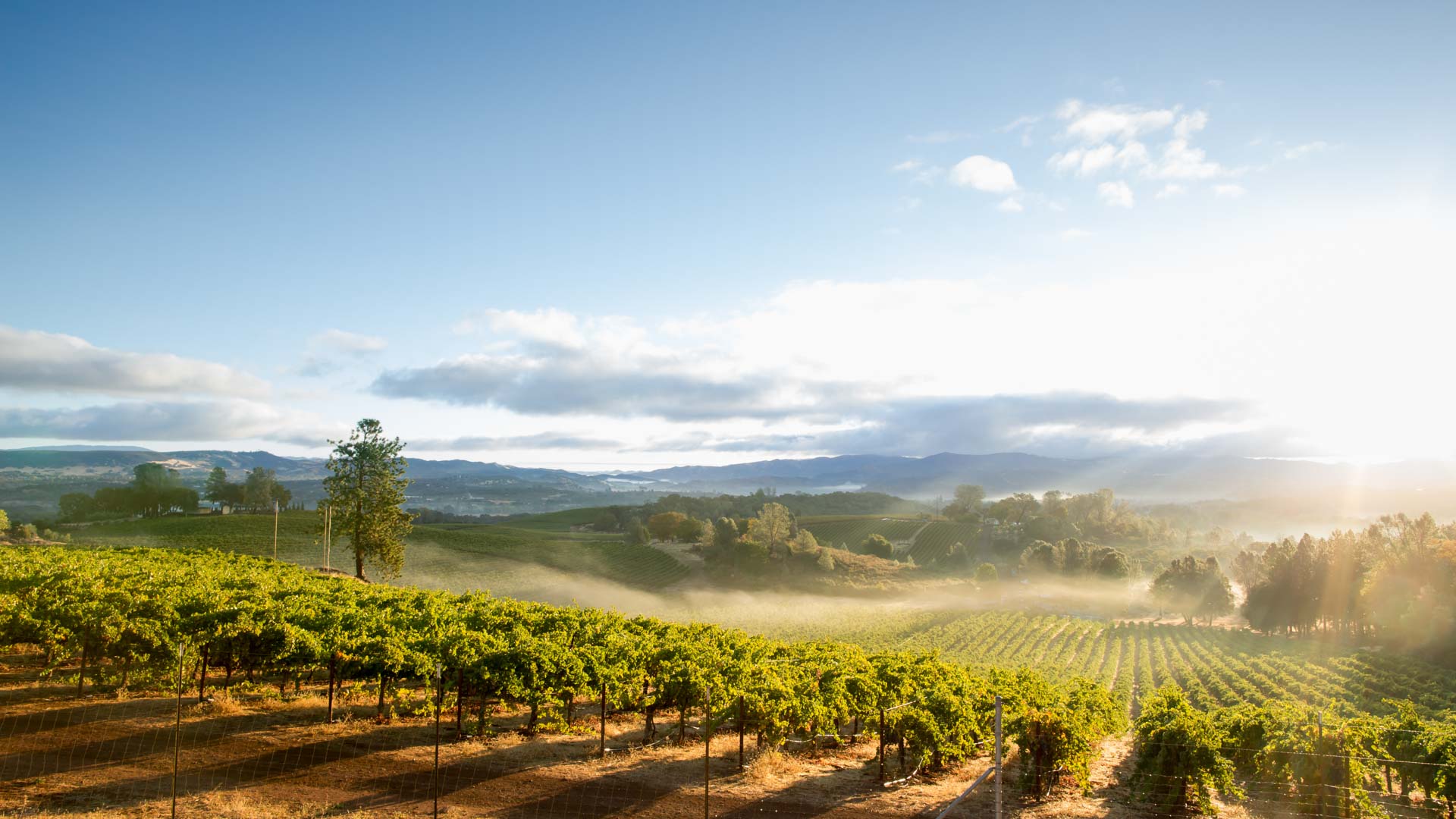Editor’s note: As communities re-open after their COVID-19-related closures, keep in mind that some parks, businesses, and attractions may still be closed or have new protocols in place. Before traveling, familiarize yourself with local guidelines and regulations for all of the destinations you visit and check out Visit California’s Responsible Travel Hub.
It’s no secret that being outside in nature has a soothing effect. Anyone who has looked up through the branches of a massive tree or enjoyed a river’s gurgle knows this to be true. In the 1980s, Japanese scientists started studying this enigmatic phenomenon. They found that natural immersion has many benefits—including lowering blood pressure, improving mood, and reducing stress. The practice of shinrin-yoku, or forest bathing, was born.
Forest bathing isn’t a hike, picnic, or jog. And there is no actual body of water required—it’s simply about surrounding yourself in nature and allowing its sounds and rhythms to wash over you.
“Forest bathing is a very simple practice,” according to Ben Page, Director of Training at the Association of Nature and Forest Therapy (ANFT) in Santa Rosa. “It has a dual purpose: Part of it is about healing yourself and part of it is about repairing the broken relationship between the human world and nature.”
Another certified forest therapy guide, Justin Legge of Humboldt County’s Elk Meadow Cabins & Redwood Adventures, suggests a more accurate translation of shinrin-yoku is actually “taking in the forest atmosphere,” which better expresses the practice’s scientific roots. “The organic compounds, or phytoncides, that conifers produce as they transpire throughout the day, have a plethora of physiological benefits,” says Legge. “If you are standing next to a tree and breathing, you are technically ‘forest bathing.’ Research shows humans are needing more time outside near trees.”
From the North Coast’s redwood groves to the cactus gardens of Joshua Tree National Park, California’s world-renowned outdoor spaces provide the perfect setting for a transformative excursion. Here’s how to plan your forest-bathing adventure in the Golden State.
Before You Go
Page, who trains forest-bathing guides and has served as one for many years himself, says it’s a good idea to set expectations before you venture out. He suggests thinking of forest bathing as a chance to connect with nature rather than to heal yourself. “It’s really about reciprocity,” he says. “How can we have a reciprocal experience with nature—with all other things on this earth?”
Choose Your Path
Some people like forest bathing on their own, while others prefer a guide. If you go solo, Page recommends bringing as few distractions as possible. Turn off your phone. Leave your journal at home. Find a beautiful spot, be still, and focus on your senses. What are you hearing, seeing, and smelling? Enjoy the moment.
A guided experience, on the other hand, can help deepen your connection. Page equates it to a yoga class. You can do yoga in your home, but having a teacher present lets your mind relax. You’re following instructions rather than thinking about what’s next. “The guide is not the therapist; the forest is the therapist,” he explains.
Susan Madden, meditation teacher, forest bathing guide, and founder of the Madera County wellness community Mindful Café, offers a two-hour guided forest bathing experience that concludes with a tea ceremony. The goal of these excursions, and other services Madden provides, is mindfulness. “It wasn’t too long ago that most people would have written that off as some pseudo-science bunk (and many still do), but mindfulness has come into the mainstream lately, in part because of the huge number of reputable, scientific studies finding a myriad of health benefits associated with mindfulness practices. A lot has been written about forest bathing, but it’s really something you have to experience.”
ANFT connects the forest bathing–curious with guides all over California—and across the world. The association’s website can help you find guided experiences close to city centers in places like the Santa Barbara Botanic Garden or in more remote locales, like Eldorado National Forest.
Where to Bathe
Page explains that you can forest bathe anywhere there’s a patch of nature. But visiting an awe-inducing spot can help you to appreciate the outdoors in a new way. Here are some of his favorite forest-bathing spots, listed north to south:
Redwood State and National Parks stretch along California’s North Coast. With groves of ancient giants, some towering over 350 feet, it’s hard to think of a better place to bask in Mother Earth’s majesty.
Point Lobos State Natural Reserve sits on a magical little slice of real estate on the northern edge of Pfeiffer Big Sur State Park. Enjoy verdant forests, dramatic sea cliffs, and wildflower fields alongside monarch butterflies, elephant seals, sea otters, and more.
Sequoia and Kings Canyon National Parks, located in the southern Sierra Nevada, are marked by grandeur. Home to the state’s highest mountain, its biggest trees, and massive caves, the twin parks are ideal spots to get a sense of nature’s greatness.
Angeles National Forest is located just 30 minutes outside of Los Angeles and covers more than 700,000 acres of wilderness. Enjoy the smell of incense cedars as you gaze at the San Gabriel Mountains’ snow-capped peaks. For a forest-bathing experience right inside the city, Page recommends the Los Angeles County Arboretum.
Joshua Tree National Park provides a different sort of forest-bathing experience. The starkly beautiful desert landscape is home to very few trees—the namesake flora is actually a flower. Enjoy the solace of cactus gardens and bright yellow blooms that follow winter rain.
No matter where you go, Page says the most important thing to bring is an open mind—and little else. Leave expectations behind and just enjoy the experience.
